Thomas Lang's Drumming Boot Camp: masterclass
Whip those rudiments into fighting fitness with these exercises!
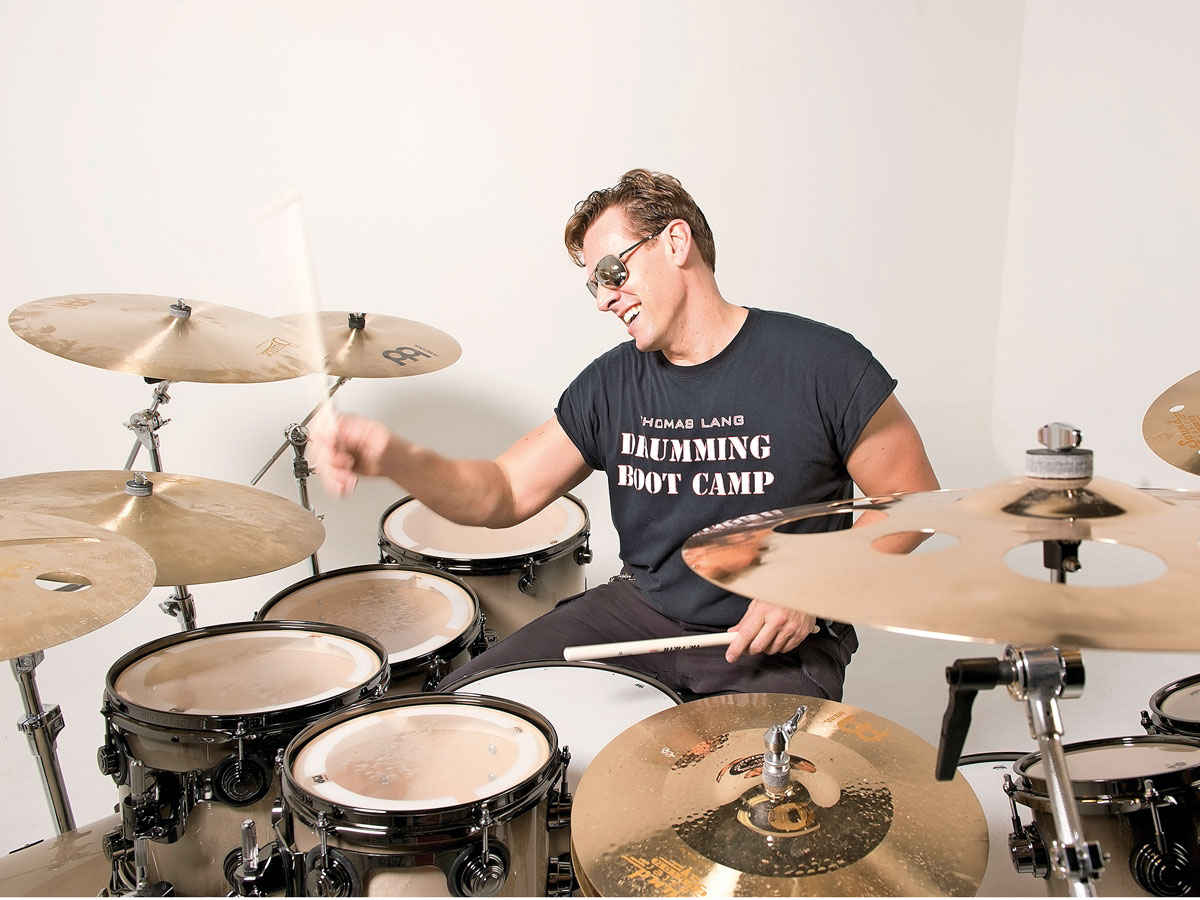
Introduction
DRUM EXPO 2014: Have you hit a wall in your drumming development? Are you stuck in a rut of playing the same grooves and fills over and over, ad infinitum? Fear not, help is at hand. It’s time to fall in, stand to attention and be ready to drop and push out 26 rudiments because Thomas Lang is taking the squad through PT today.
The winner of multiple awards from Rhythm magazine readers, including Best Drummer, Best Studio Drummer and Best Solo Drum Performance, Thomas has been at the cutting edge of drumming innovation for two decades.
"I make sure these drills work for everybody... no matter what their playing ability is" - Thomas Lang
He’s been a pop session player, a progressive metal monster, a fearless fusion master and an educator with his best-selling DVDs Creative Control and Creative Coordination And Advanced Foot Technique.
The validity of his concepts is eloquently illustrated in his exceptional command of the drum kit and, not surprisingly, other drummers have sought out his expertise. In 2009 Thomas held his very first Drumming Boot Camp in LA, an in-depth, intensive experience designed to share his considerable knowledge in a group environment.
As word spread, drummers started coming in larger and larger numbers. “Suddenly I ended up with groups of 10 or more people at a time so it became a little chaotic,” said Thomas. “I decided to streamline the whole operation, organise it, advertise it and give it a name. That’s how the Drumming Boot Camp concept was born.”
“I get all kinds of players,” Thomas explained when asked about the skill level of his Boot Camp participants. “I tweak the exercises to accommodate everybody in the room but in most cases we have a fairly even playing field. If you’re a beginner, you just play them slower or at half-time. I make sure these drills work for everybody and that everybody in the room is always challenged and involved and engaged no matter what their playing ability is.”
If you're yet to make it to one of Thomas' Boot Camps fear not because we've asked him to take us through some of the most common drumming problems his students bring to him. Get ready for a workout!
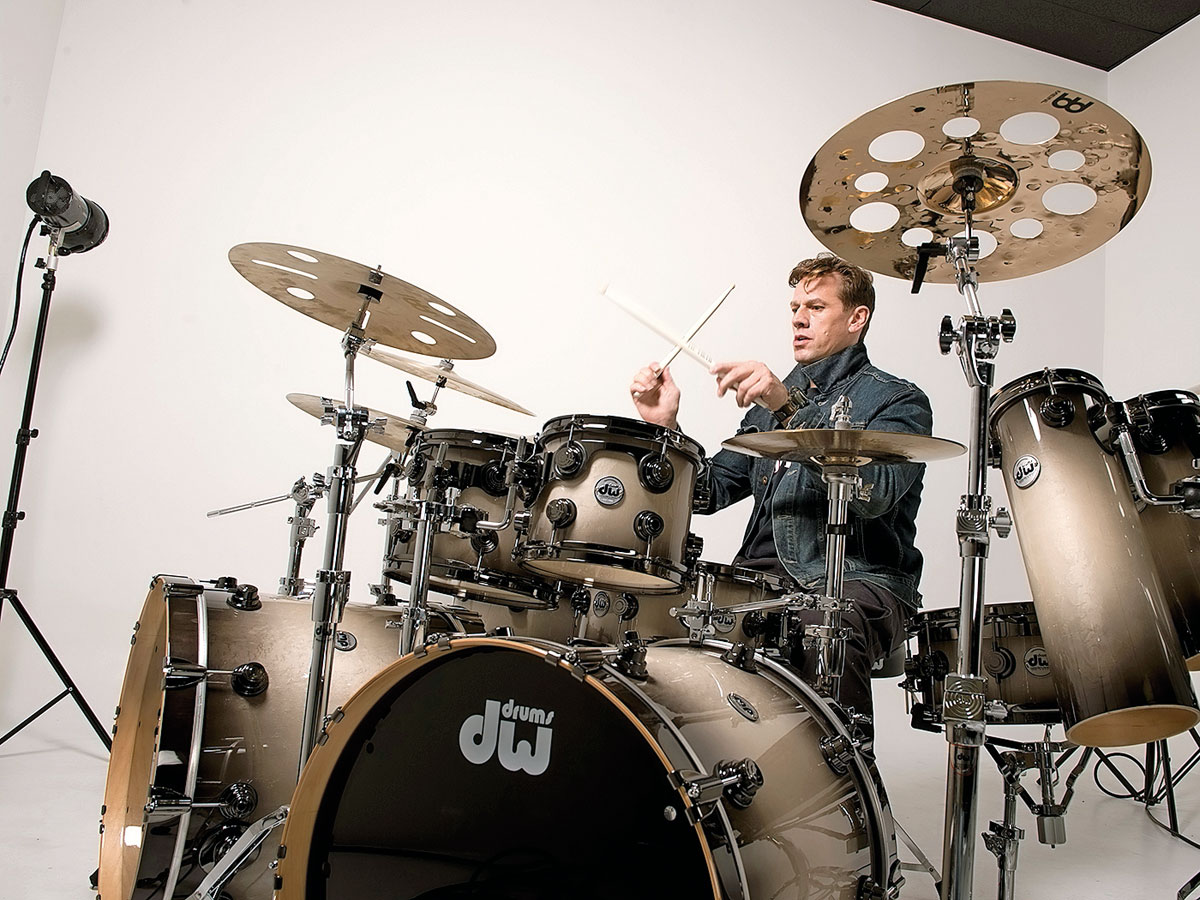
Mastering unison strokes
The Briefing
If you want to balance out your hands and bring up a weaker side that’s holding you back, there is nothing that Thomas likes more than unison strokes, playing with both hands simultaneously.
"“They help you develop both hands at the same time to the same level of ability"
“They’re the great equaliser,” says Thomas. “They help you develop both hands at the same time to the same level of ability. You have to focus on accuracy otherwise you’re flamming immediately. You have to be at the centre of the drum at the same time with both hands, so it’s a great accuracy drill, and it helps you gauge how good your left hand is versus your right hand.
"If you can’t keep up with what your right hand is doing with your left hand, you need more work on your left hand. You don’t want your left foot to be only 20 percent of your right hand in regards to playing ability. Ideally you want all four limbs to be at the same level of skill and command so that you can play completely freely with all four limbs.”
The Mission
“Unison stroke patterns, both hands at the same time in various groupings with accents and without. For example, 16th notes playing an accent pattern at 100 bpm. If you can do that fast with control and precisely playing completely flat, without flamming, that’s a killer hand exercise.
"You can do that in groups of three - in triplets, in groups of 4, 5, 6, you can play accent patterns but always using unison strokes and always on one surface.
"It could be on the hi-hat, could be on the snare drum or both hands on the floor tom, and then once you get used to it you can split your hands and play on two different instruments.”
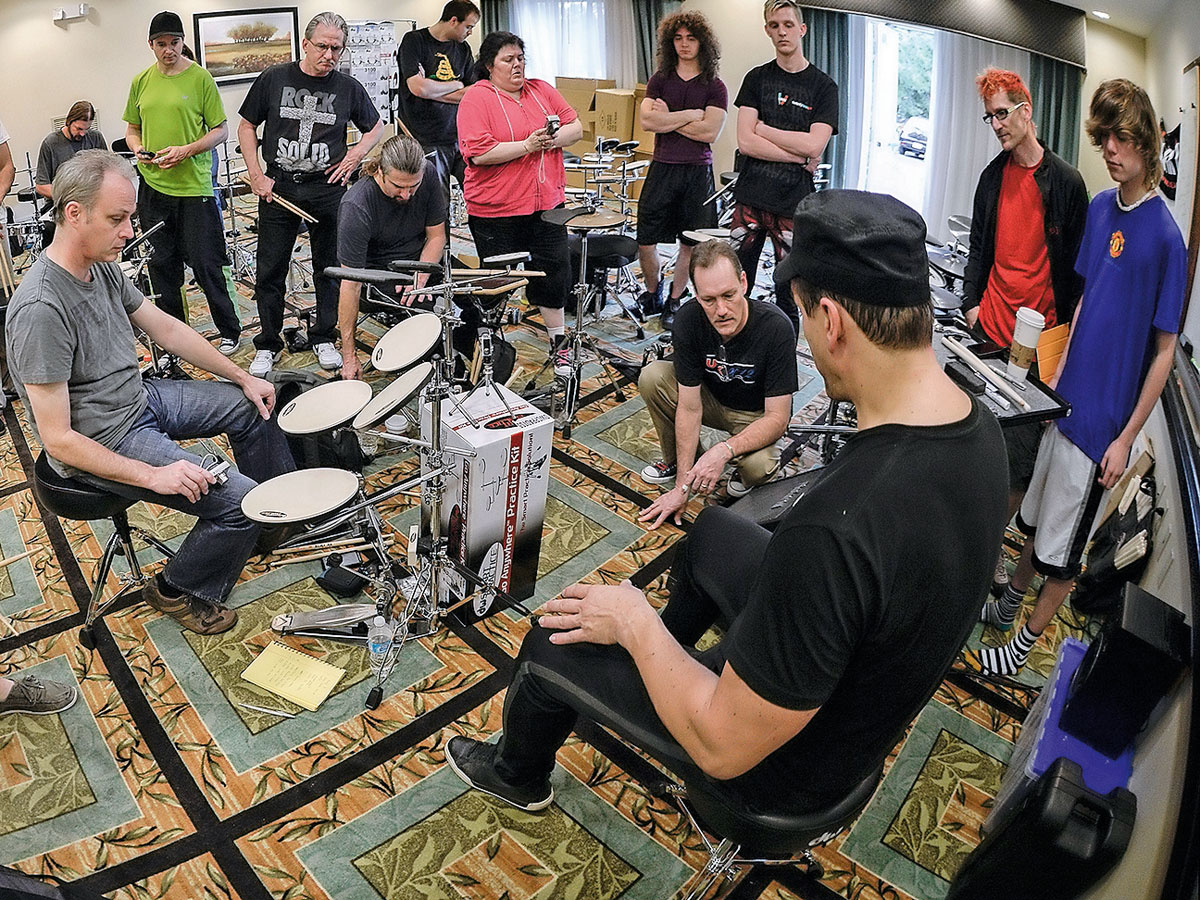
Foot control exercise: Stone Killer II
The Briefing
This exercise for the feet was inspired by George Lawrence Stone, the author of the seminal instructional book Stick Control For The Snare Drummer and a man who was sought out by jazz legends Joe Morello, Gene Krupa and Lionel Hampton.
"The Stone Killer II is basically a preparation exercise for the double-stroke roll."
“The Stone Killer II is basically a preparation exercise for the double-stroke roll. That’s a killer exercise for the feet,” warns Thomas.
The Mission
“You play a soft stroke and a loud stroke, so right, RIGHT, left, LEFT. It’s not an inverted double, you phrase it as a regular double starting with the right foot but the accent is always on the off-beat.
"That’s a really great control exercise for the feet and again it’s one of those great equalising exercises. It’s perfectly symmetrical and obviously it bounces from right to left and it gives each foot the same amount of work. It’s a really efficient foot exercise - power building, strength building and control building.”
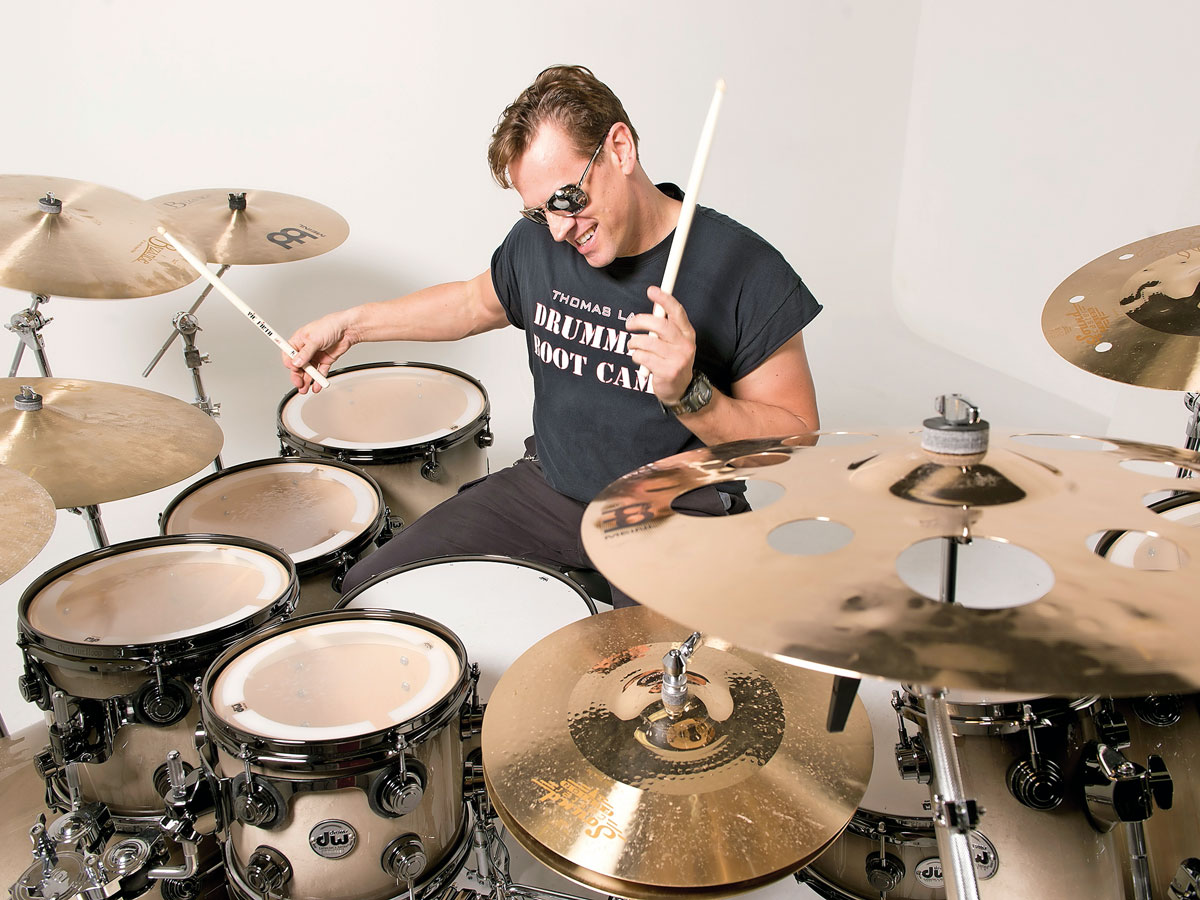
Sort out your weaknesses
The Briefing
“There are two kinds of coordination,” says Thomas. “There’s linear coordination and non-linear coordination.
"Alternating strokes with the hands.That’s the most basic linear coordination exercise there is"
"If we talk about linear coordination, do you know what is the most basic linear coordination exercise you can do on the drums? Alternating strokes with the hands.That’s the most basic linear coordination exercise.
"The next most basic would be right foot, left foot. The third most basic would be one hand and one foot, so, for example, right hand, right foot. So I start building drills from that.”
The Mission
Start by playing alternating notes between the right hand and right foot using different note rates and phrasings - quarter notes, eighth notes, triplets. Start at around 90bpm and work up to switching between 16th notes and 32nd notes. Then do the same thing with the left hand and the right foot; then with the left hand and the left foot, then right hand, left foot.
“If we suck and can’t keep up with the left side, we put emphasis on the left side and we only do that until we’ve matched our ability,” says Thomas. “If the left hand is okay and the left foot sucks then we take the strong hand, the right hand, and work that against the weakest foot.”
Rotate between right hand/right foot; right hand/left foot; left hand/right foot; and left hand/left foot and play the note pyramids rotating through combinations of all four limbs. Then do the same thing using double strokes - right hand two strokes, right foot two strokes and again rotate through all four limbs.
To make the drill more challenging, try splitting the doubles between different playing surfaces.
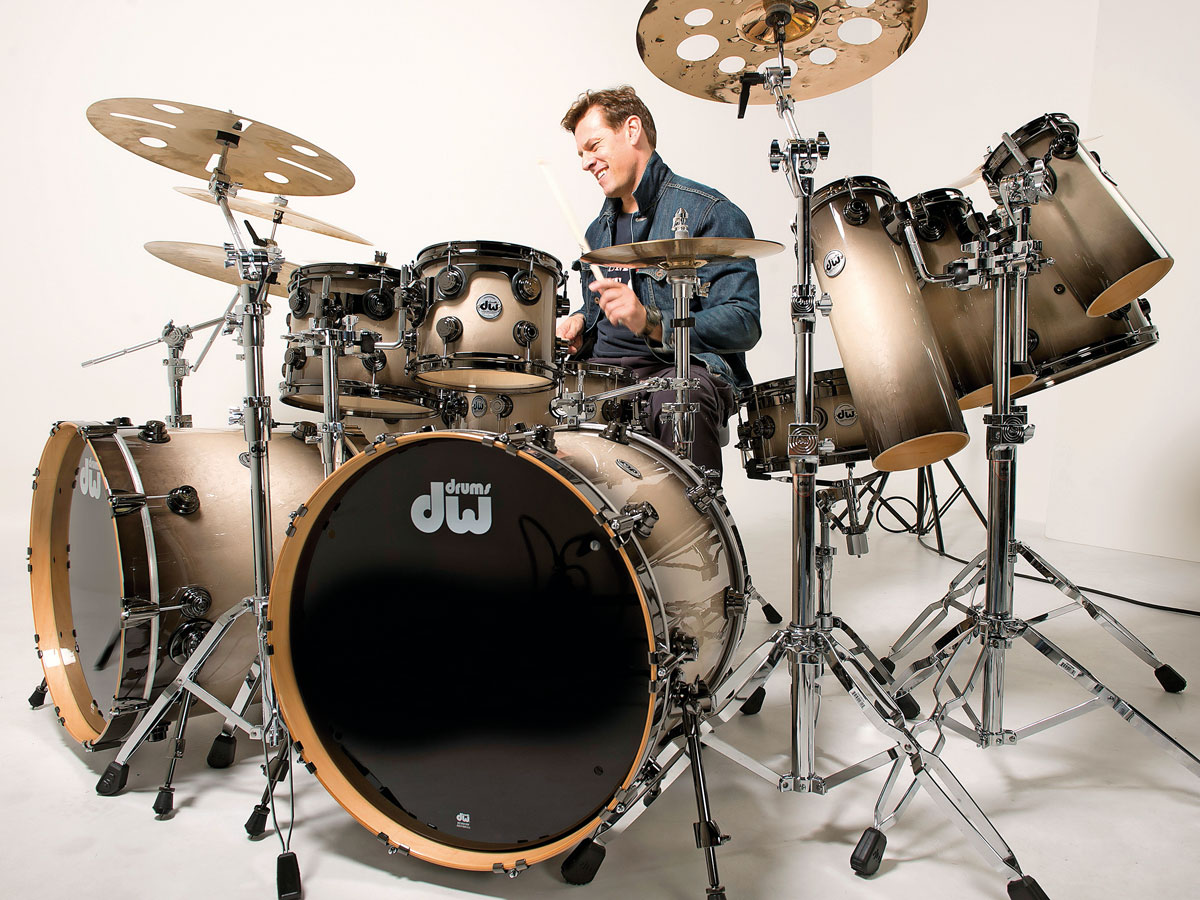
Double strokes with the feet
The Briefing
Says Thomas: “In drumming there is a binary code which is singles or doubles. There is nothing else you can play that is a controlled stroke on the drumset, so it’s very simple.
"In drumming there is a binary code which is singles or doubles"
"It’s like 1s and 0s in computer programming. Out of 1s and 0s you can program anything you want - it’s the same with singles and doubles. A paradiddle is two singles, one double. RLRR, LRLL.
"For feet specifically you have to focus on doubles because if you can only play single strokes you are missing 50 percent of your playing potential.”
The Mission
“A great foot exercise is double strokes with the feet beginning as regular double strokes starting with the right foot with no accents played in all three techniques - heel down, heel up and as ankle strokes. Then inverted doubles, left doubles, and left inverted doubles as a cycle of four bars as an exercise.
"One bar of regular doubles, one bar of inverted doubles, one bar of left doubles, one bar of left inverted doubles, and do that as a cycle.
"Play basic time on top of that with your hands and rotate through these cycles with your feet. Start slow at 70bpm, focus on accuracy, precision and dynamics. Gradually increase the tempo until you hit 200, 220bpm which is very fast.”